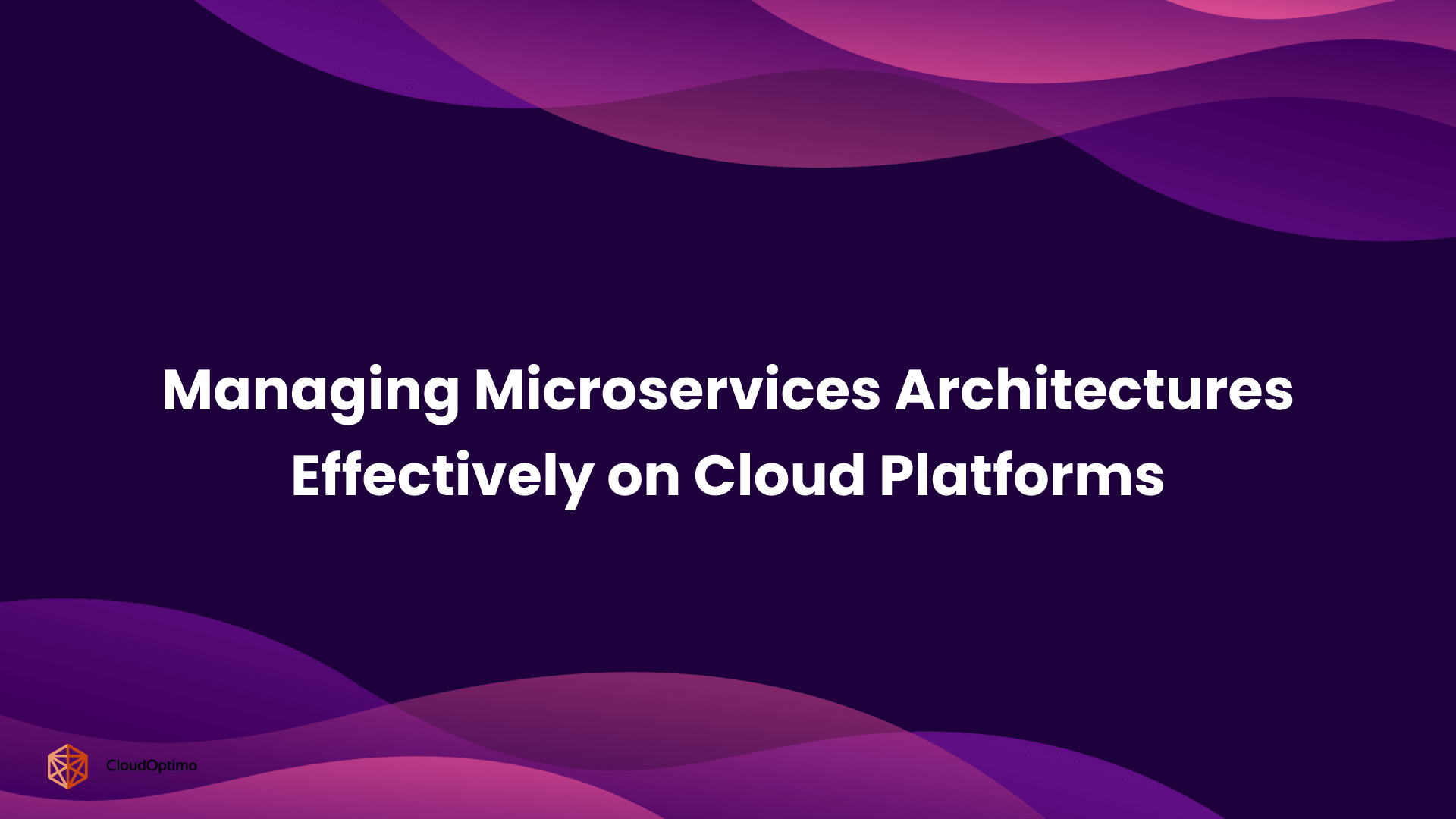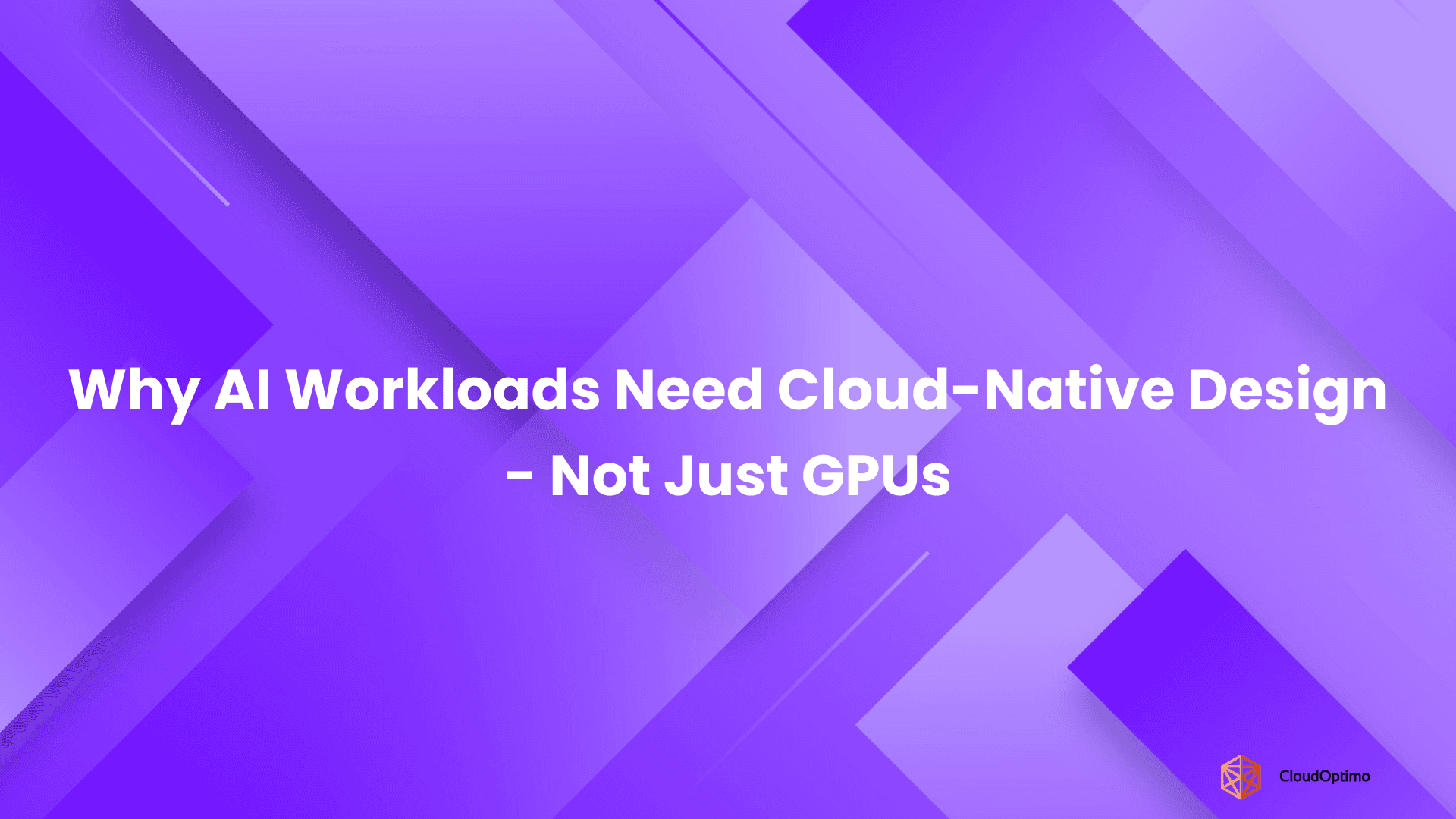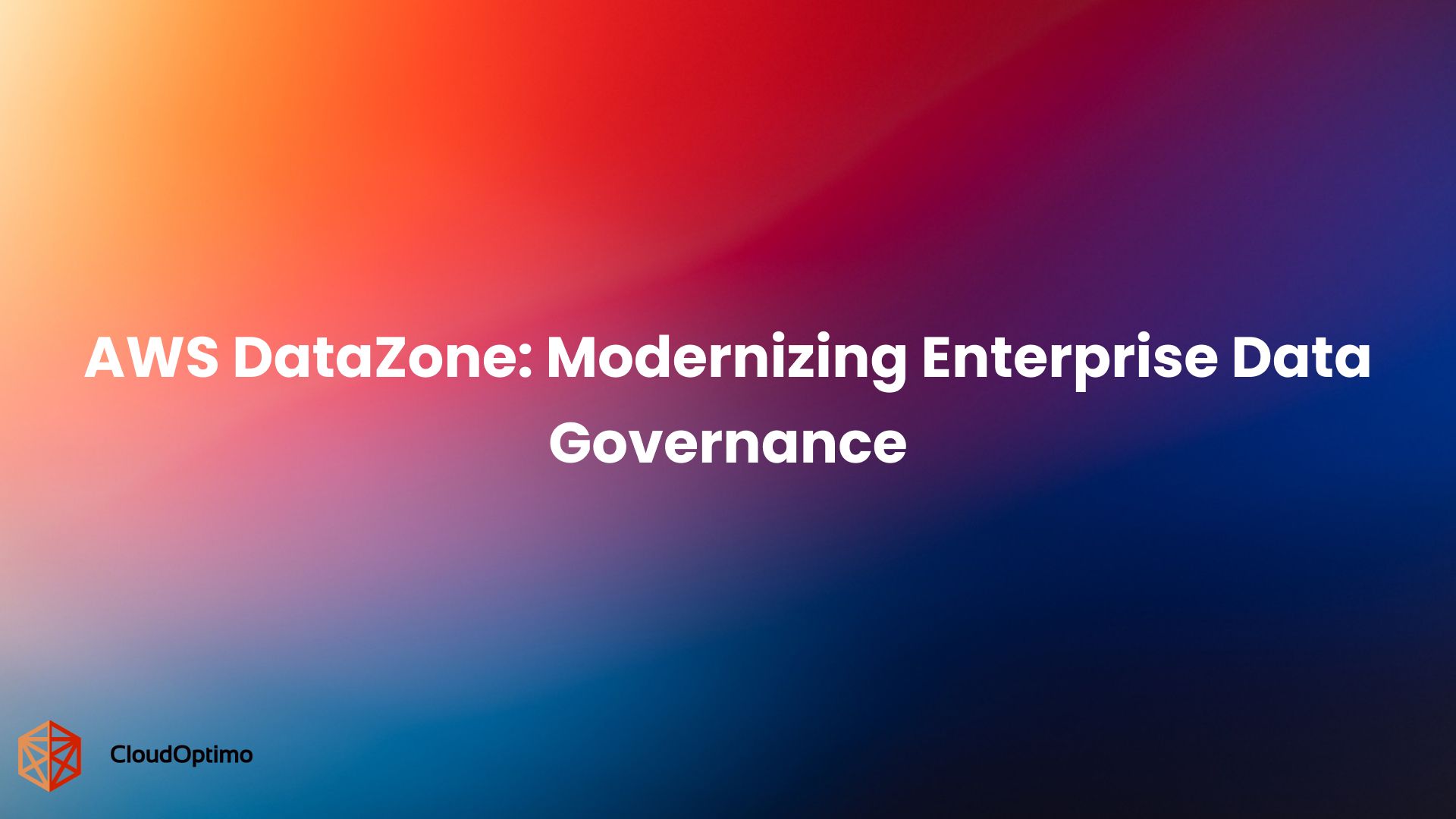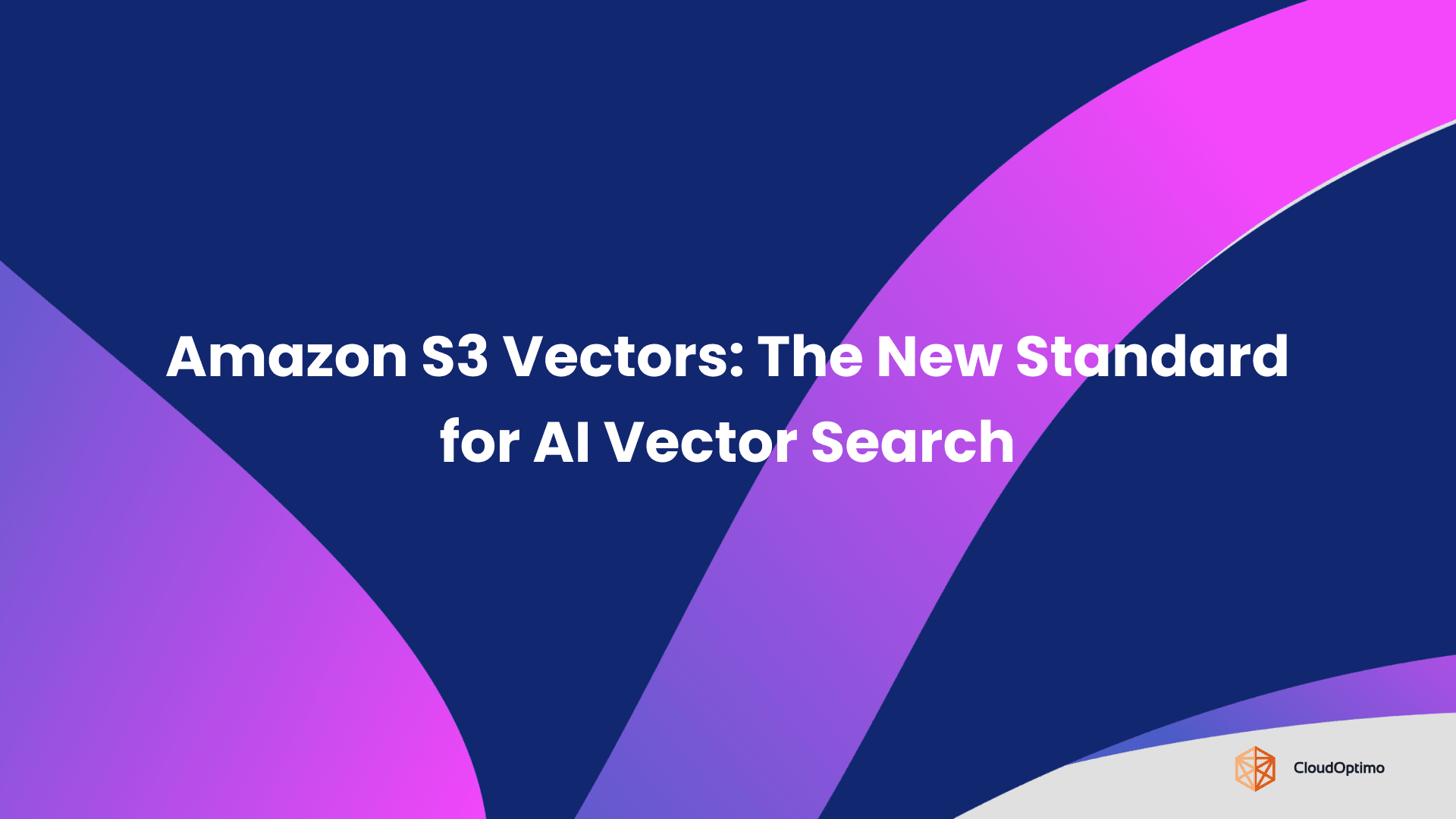The Rise of Serverless
Traditional application deployment required provisioning and managing servers, often leading to operational complexity and fixed costs, even during idle periods. Serverless computing changes this model by abstracting infrastructure management entirely. Developers focus solely on writing event-driven code, while the cloud provider handles scaling, availability, and maintenance automatically.
This shift improves cost efficiency by charging only for actual execution time, reduces operational overhead, and accelerates deployment cycles. As organizations adopt serverless architectures, choosing the right platform—AWS Lambda, Azure Functions, or Google Cloud Functions—is critical to meeting performance, integration, and development needs.
AWS Lambda: The Pioneer of Serverless Flexibility
In 2014, AWS Lambda set the standard for Function-as-a-Service (FaaS). It allows developers to run code without managing servers, charging only for the compute time used. Lambda functions automatically scale based on demand and respond to many AWS event sources, making it the backbone of many event-driven architectures.
Key Strengths
- Extensive ecosystem integration: Lambda works seamlessly with AWS services like API Gateway, S3, DynamoDB, SQS, SNS, and CloudWatch.
- Custom runtimes: Bring your own programming languages beyond the built-in ones.
- Lambda Layers: Share libraries and dependencies across functions for easier maintenance.
- Workflow orchestration: Use AWS Step Functions to coordinate complex multi-step processes.
- Edge computing: Lambda@Edge runs functions closer to users through CloudFront, reducing latency globally.
Native Integrations & Compatibility
AWS Lambda’s tight coupling with AWS services like S3 (storage), DynamoDB (NoSQL database), API Gateway (HTTP APIs), SQS (messaging queue), and SNS (notifications) enables fast, reliable event-driven workflows. While cross-cloud usage is possible, it often requires additional coding or third-party tools.
Azure Functions: Deep Microsoft Integration with Stateful Power
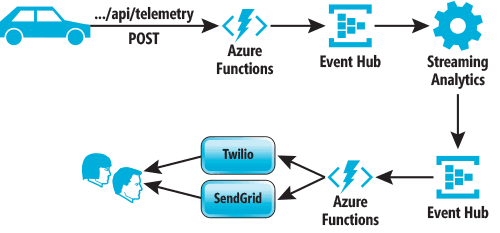
Source - Azure
Introduced in 2016, Azure Functions combines serverless agility with Microsoft’s enterprise ecosystem. It supports both stateless and stateful function execution through Durable Functions, making it a versatile choice for complex workflows and hybrid environments.
Key Strengths
- Stateful workflows: Durable Functions allow orchestration and long-running processes.
- Native .NET support: Ideal for C# developers with deep Visual Studio integration.
- Broad triggers: Respond to Azure Blob Storage, Service Bus, Cosmos DB, Event Grid, HTTP, and scheduled events.
- Low-code automation: Integrates with Logic Apps for workflow automation without heavy coding.
- Hybrid cloud readiness: Connect on-premises resources via Azure Arc.
- DevOps integration: Smooth CI/CD pipelines using Azure DevOps.
Native Integrations & Compatibility
Azure Functions integrates tightly with Azure services such as Blob Storage (file storage), Service Bus (messaging), Cosmos DB (globally distributed NoSQL), Event Grid (event routing), and Logic Apps (workflow automation). Cross-cloud operation is feasible but generally requires additional bridging or custom code.
Google Cloud Functions: Simplicity for Web-First and Event-Driven Apps

Source - GCP
Google Cloud Functions, launched in 2016, focuses on ease of use and fast deployment. It delivers straightforward serverless compute, especially suited for web apps, mobile backends, and lightweight event processing.
Key Strengths
- Clean developer experience: Minimal configuration for fast function deployment.
- Native HTTP support: Functions come with HTTPS endpoints and built-in authentication and CORS.
- Firebase integration: Perfect for mobile and real-time web applications.
- Event-driven analytics: Tight connection to Pub/Sub, Cloud Storage, Firestore, and BigQuery.
- CI/CD: Seamless integration with Cloud Build for automated workflows.
Native Integrations & Compatibility
Google Cloud Functions connects deeply with Google services such as Cloud Storage (object storage), Pub/Sub (messaging), Firestore (NoSQL), BigQuery (data analytics), and Firebase (mobile/web backend). Cross-cloud use is less common and requires custom solutions or middleware.
When Does Each Platform Excel?
The choice between serverless platforms often depends on specific use cases and scenarios.
Ideal Scenarios for AWS Lambda
AWS Lambda is particularly well-suited for:
- API backends paired with API Gateway and DynamoDB
- Real-time file processing triggered by S3 events
- Stream processing with Kinesis
- IoT backends processing device data
- Organizations already invested in the AWS ecosystem
Use Cases Where Azure Functions Excel
Azure Functions stands out for:
- Enterprise applications requiring integration with Microsoft services
- Long-running, stateful processes using Durable Functions
- Hybrid cloud scenarios connecting to on-premises systems
- .NET shops leveraging existing skills and code
- Logic Apps integration for business process automation
Situations Best Suited for Google Cloud Functions
Google Cloud Functions works best for:
- Mobile backends with Firebase integration
- Simple microservices with minimal configuration
- Event-driven data processing with BigQuery and Pub/Sub
- Startups seeking rapid development and deployment
- Organizations leveraging Google's data analytics capabilities
Head-to-Head Breakdown
Choosing the right serverless platform isn’t just about features—it’s about how those features work together to support your team, your workloads, and your growth.
Below is a quick look at the areas that matter most, and how AWS, Azure, and Google Cloud approach them differently.
| Comparison Area | AWS Lambda | Azure Functions | Google Cloud Functions |
| Foundational Architecture | Deep integration with AWS services | Strong with event hubs and .NET workflows | HTTP-native, built for quick setups |
| Security, Identity & Governance | Fine-grained IAM roles | Enterprise-grade with AAD integration | Simpler IAM, solid service account model |
| Multi-Region & Global Availability | Broad regions, manual setup | Streamlined enterprise deployment | Auto HTTPS endpoints, lighter tooling |
| Scalability & Operational Efficiency | Highly customizable, powerful tools | Managed scaling with Premium Plan | Easy to use, scales fast for web workloads |
| Code vs. Configuration | Code-heavy with IaC flexibility | Mix of UI and config-driven options | Config-lite, fast to deploy |
| Developer Experience & Ecosystem | Mature tooling, wide language support | Seamless for .NET, good local tools | Lightweight, good for Node.js/Python |
Now let's compare these platforms across several critical features.
Foundational Architecture: Serverless Approaches Across AWS, Azure, and GCP
Though all three cloud providers implement serverless computing, their foundational architectures reveal unique design priorities. Understanding how each handles function execution, triggers, and runtime environments is key to building scalable, event-driven applications in the cloud.
AWS Lambda: Optimized Event-Driven Performance at Scale
AWS Lambda pioneered serverless with a laser focus on on-demand execution, scaling, and container efficiency.
Temporary, Isolated Execution Environments:
Each Lambda function executes in its container, spun up in response to events like API Gateway calls, S3 uploads, or queue messages. AWS aggressively optimizes container reuse (keeping them “warm”) to reduce cold-start latency, especially in high-throughput scenarios.
Cold Start Performance
Typical cold start latency ranges from 100ms to 1s, depending on language and package size. Compiled languages like Go tend to perform better.
To reduce latency in critical paths, AWS offers Provisioned Concurrency, which keeps a set number of instances warm. Lambda Layers can also streamline code packaging to minimize cold start overhead.
Event-Driven at Its Core:
Lambda uses an event-first model. Everything from file uploads to database changes can be a trigger. This enables rich integrations with other AWS services and simplifies the reactive application design pattern.
Language Support and Deployment Flexibility:
Supports Node.js, Python, Ruby, Java, Go, .NET, and custom runtimes via containers or the Lambda Runtime API. Deployment can be handled using the AWS Console, CLI, CI/CD tools, or AWS SAM (Serverless Application Model).
Real-World Impact:
For organizations building high-scale, event-driven apps tightly integrated with AWS services, Lambda offers seamless scalability and mature tooling. However, granular control over function performance and cold starts may require thoughtful architecture and monitoring.
Azure Functions: State-Aware and Enterprise-Integrated Serverless
Azure Functions blends flexibility with enterprise integration, making it ideal for organizations with complex workflows and a Microsoft ecosystem.
Flexible Hosting Plans and Stateful Workflows:
Azure Functions provides two main hosting options that influence how functions behave in terms of latency, scaling, and resource allocation:
- Consumption Plan: A true serverless model where you only pay for the compute time used. Functions scale automatically and can handle massive concurrency, but may suffer from cold starts due to dynamic provisioning.
- Premium Plan: Designed for performance-sensitive workloads, this plan includes pre-warmed instances, eliminating cold starts and providing faster execution. It also supports VNET integration, longer execution times, and more powerful hardware, making it suitable for enterprise-grade or latency-critical scenarios.
This flexibility allows teams to optimize for cost or performance depending on workload requirements—something not as directly configurable in AWS Lambda or Google Cloud Functions.
Cold Start Behavior
Cold starts range from 300ms to 2s, depending on language and hosting plan. The Premium Plan reduces this by keeping instances pre-initialized.
Languages like .NET tend to start faster due to tighter optimization in the Azure runtime.
Durable Functions for Stateful Execution:
Unlike AWS or GCP, Azure supports Durable Functions, enabling stateful orchestration of long-running workflows, chaining, and fan-in/fan-out patterns. This expands the serverless model to include process automation, not just short-lived stateless functions.
Broad Language and Tooling Support:
Supports C#, JavaScript, F#, Java, Python, PowerShell, TypeScript, and custom handlers. Deployments integrate well with Visual Studio, VS Code, Azure CLI, GitHub Actions, and Azure DevOps.
Real-World Impact:
Enterprises already invested in Microsoft tools benefit from native integrations and advanced features like state management and identity-based function access. Azure’s layered hosting model also allows teams to fine-tune performance and cost trade-offs.
Google Cloud Functions: Simplified HTTP-Centric Design with Developer Focus
GCP takes a clean, developer-centric approach to serverless, emphasizing simplicity and HTTP-based triggers.
Always HTTP-Ready:
Each function gets an HTTP endpoint by default, making it ideal for lightweight APIs, webhooks, and mobile backends. While GCF supports other triggers like Pub/Sub and Cloud Storage, its HTTP-first design lowers the barrier for web developers.
Cold Start Considerations
Cold starts typically fall in the 200ms to 1.5s range, with Node.js and Go generally faring best. GCP allows for minimum instance settings, keeping functions warm to reduce first-hit latency.
Container-Based, Stateless Execution:
Like AWS Lambda, Google Cloud Functions run in isolated containers that scale automatically. However, GCF emphasizes simplicity over infrastructure tuning, prioritizing ease of use over warm-start optimization.
Language and Deployment Support:
Supports Node.js, Python, Go, Java, .NET, Ruby, and PHP. Functions are deployed using the gcloud CLI, Cloud Console, or automated via Cloud Build pipelines.
Real-World Impact:
For agile teams deploying lightweight microservices or web APIs, GCF offers rapid deployment and low friction. However, it may be less suited for complex orchestrations or use cases that demand tight control over state or hosting.
| Feature | AWS Lambda | Azure Functions | Google Cloud Functions |
| Execution Model | Event-driven, containerized functions | Event-driven, with Consumption & Premium hosting options | Stateless functions with automatic HTTP endpoints |
| Cold Start Optimization | Aggressively optimized warm containers | Premium Plan enables pre-warming | Emphasizes simplicity; less optimized for cold starts |
| State Management | Stateless only | Durable Functions allow orchestration & state | Stateless only |
| Default Triggers | Multiple (S3, SNS, API Gateway, etc.) | Multiple (HTTP, Event Grid, Timer, etc.) | HTTP by default; also supports Pub/Sub, Cloud Storage |
| Language Support | Node.js, Python, Java, Go, .NET, Ruby, custom runtimes | C#, JavaScript, Java, Python, PowerShell, TypeScript, F#, custom | Node.js, Python, Go, Java, .NET, Ruby, PHP |
| Deployment Tools | AWS SAM, CLI, Console, CodePipeline | Visual Studio, VS Code, Azure CLI, DevOps, GitHub Actions | gcloud CLI, Console, Cloud Build |
| Unique Strength | Fine-tuned scalability and deep AWS integration | Stateful orchestration & tight integration with the Microsoft ecosystem | Simplicity, HTTP-native approach, fast dev-to-prod cycles |
Code vs. Configuration: Declarative vs. Code-Driven Approaches in Serverless Platforms
How much logic lives in code versus configuration shapes the developer experience on each cloud. Some platforms favor expressive configuration for integrations, while others lean into direct coding for flexibility.
AWS Lambda: Code-First Power with Infrastructure-as-Code Discipline
Lambda emphasizes code as the primary medium for building serverless logic.
Minimal Declarative Abstractions:
Most behavior, from data transformation to integrations, is handled directly in the handler code. While this provides full control, it can increase boilerplate for common patterns like reading from queues or writing to databases.
Configuration via Console or IaC:
While function settings (timeouts, memory, environment variables) can be managed through the AWS Console or CLI, serious deployments typically rely on Infrastructure-as-Code tools like AWS CloudFormation, AWS SAM, or Terraform for reproducibility and versioning.
Real-World Impact:
For teams seeking tight control and willing to script integrations in code, Lambda’s model is ideal, especially when paired with mature DevOps practices.
Azure Functions: Declarative Bindings for Integration-Heavy Workloads
Azure Functions uses a hybrid model that blends configuration with logic.
Binding-Driven Configuration:
Triggers and outputs are defined using function.json files or decorators (in languages like C# and Python). This allows for seamless integration with services like Azure Storage, Event Hubs, or Cosmos DB, with minimal custom code.
Reduced Boilerplate for I/O:
Common patterns (e.g., Queue → DB write) can be expressed in configuration alone. This makes Azure particularly strong for integration-heavy or orchestrated workflows, and simplifies onboarding for teams familiar with declarative programming.
Real-World Impact:
Azure's model accelerates development in enterprise scenarios, reducing cognitive load by shifting integration setup to configuration while keeping business logic clean.
Google Cloud Functions: Minimalist Design Prioritizing Simplicity
GCP offers a streamlined, code-centric experience focused on rapid delivery.
Function-as-Entry-Point Simplicity:
Cloud Functions minimize ceremony. A single exported function (often named main or handler) receives an event or HTTP request, and developers define all logic in code, including service integration.
Configuration-Light Philosophy:
There are fewer abstractions for binding to other services. This reduces the learning curve but increases manual code for complex pipelines (e.g., chaining services or integrating with multiple endpoints).
Real-World Impact:
Ideal for lightweight APIs or event-driven extensions that value fast startup and low friction. As complexity grows, developers may need to build and manage more of the integration layer themselves.
| Feature | AWS Lambda | Azure Functions | Google Cloud Functions |
| Approach | Code-first | Hybrid (config + code) | Code-centric |
| Trigger & Binding Setup | In code or via IaC templates | function.json or decorators define inputs/outputs | In code only |
| Integration Simplicity | Requires boilerplate in code | Declarative bindings reduce code | Direct, manual integration |
| Infrastructure Management | SAM, CloudFormation, Terraform | Azure Resource Manager, Bicep, Azure DevOps | gcloud CLI, Cloud Build |
Scalability & Operational Efficiency: How Each Platform Handles Growth and Load
Serverless platforms shine by auto-scaling on demand, but their strategies vary. Understanding these nuances is key to balancing responsiveness, cost, and performance.
AWS Lambda: Near-Instant Scale with Granular Control
Lambda is architected to scale horizontally and rapidly.
Burst Scaling and Concurrency Limits:
Each function can handle thousands of parallel invocations, scaling nearly instantly. AWS enforces a default concurrency limit of 1,000, which can be increased via support request. You can also set reserved concurrency per function for guaranteed throughput and throttling control.
Fine-Grained Performance Tuning:
Developers can tweak memory (128MB–10GB), which also adjusts CPU and network resources, enabling optimization for both cost and speed.
Real-World Impact:
Excellent for unpredictable or high-volume workloads like real-time processing, where scale and performance need tight, predictable control.
Azure Functions: Configurable Scaling with Predictable Patterns
Azure's scaling model adapts based on hosting plan and workload nature.
Consumption Plan for Elastic Scaling:
This serverless tier scales out automatically based on demand but may face cold starts or throughput limits under high load.
Premium Plan for Predictable Performance:
Premium Functions maintain pre-warmed instances, offer VNET integration, and support scaling based on rules or schedules. This is ideal for APIs or latency-sensitive tasks needing high reliability.
Real-World Impact:
Azure’s dual-plan model provides architectural flexibility: elastic scaling for bursty loads, or provisioned infrastructure for mission-critical workloads with consistent traffic.
Google Cloud Functions: Effortless Auto-Scaling with Minimal Tuning
Google Cloud Functions offers simplicity-first scaling with minimal manual configuration.
Seamless Parallelism:
Functions scale horizontally based on concurrent request volume, with a default concurrency limit of 1,000 (modifiable). There's no need to provision, configure, or warm up instances.
Focus on Developer Velocity:
Rather than exposing scaling knobs, GCP abstracts most operational concerns suited to use cases where time-to-deploy matters more than runtime fine-tuning.
Real-World Impact:
Great for lightweight services and mobile/web backends where dev speed and hands-off scaling are priorities. Less ideal for applications needing low cold-start latency or complex scaling rules.
| Feature | AWS Lambda | Azure Functions | Google Cloud Functions |
| Scaling Behavior | Automatic burst scaling to high concurrency | Event-based scaling (Consumption) or pre-warmed (Premium) | Automatic based on HTTP/events |
| Concurrency Limits | 1,000 default; adjustable; can reserve per function | Varies by plan; Premium allows more tuning | 1,000 default; adjustable |
| Cold Start Mitigation | Optimized container reuse; Provisioned Concurrency | Premium plan avoids cold starts (pre-warmed instances) | Cold starts are possible; 2nd gen offers minimum instances to mitigate |
| Resource Tuning | Customizable memory/CPU per function (CPU scales with memory) | Premium supports larger instances, longer timeouts | Limited runtime tuning (memory allocation, CPU scales with memory) |
Multi-Region & Global Availability: Scaling Seamlessly Across the World
As applications serve users across continents, serverless platforms must deliver consistent performance, high availability, and low latency—regardless of location. Each cloud provider supports global scaling differently, balancing control, automation, and effort.
AWS Lambda: Global Reach with Operational Flexibility
Widespread Infrastructure, But Manual Scaling:
AWS Lambda is available in over 30 regions worldwide, giving it one of the broadest global footprints. However, functions must be deployed to each region individually there's no automatic multi-region replication. This gives teams full control, but requires additional setup.
Global Routing Tools For Performance And Uptime:
To minimize latency and ensure users reach the nearest healthy region, AWS offers Route 53 for smart DNS routing and Global Accelerator for optimized network paths. These tools allow organizations to design highly available systems, but configuration is entirely manual.
- Performance across regions:
- Typical round-trip latency (US ↔ Europe): ~160ms
- Typical round-trip latency (US ↔ Asia): ~270ms
Provisioned concurrency and edge-optimized APIs can improve responsiveness for global users.
Real-World Use Case:
For companies delivering critical, time-sensitive services (like real-time analytics or financial processing), AWS offers the building blocks for global reliability and low-latency access. However, it demands engineering effort to coordinate deployments and handle failover.
Azure Functions: Enterprise-Ready with Built-In Redundancy
Region-aware Scaling With Enterprise Consistency:
Azure Functions are supported in all major Azure regions, and deployments can be made globally through Azure Resource Manager templates or Azure DevOps pipelines. While automatic replication isn’t built-in, the Azure platform makes it easier to mirror deployments consistently across regions.
Built-in Load Balancing with Traffic Manager:
Azure Traffic Manager enables global DNS-based routing, helping users reach the closest available region based on performance or priority. Combined with the Premium Plan, you can pre-warm instances across multiple regions to reduce cold start latency.
Performance Across Regions:
- Average latency (US ↔ UK): ~150–180ms
- Premium Plan reduces cold start delays by up to 70%
- Azure Front Door can further improve latency and availability with intelligent routing and health checks.
Real-World Use Case:
For large enterprises with global offices or customer bases, Azure simplifies multi-region setups while keeping governance, policy, and identity consistent across deployments. It's ideal for teams already aligned with Microsoft's ecosystem.
Google Cloud Functions: Lightweight Global Reach for Web-Centric Workloads
HTTP-native Global Access:
Every Google Cloud Function gets an HTTPS endpoint, making global invocation easy, especially for web apps or APIs. Google’s CDN and load balancing layer help reduce latency without much developer overhead.
Simplified Regional Deployment, but Fewer Tools for Orchestration:
Functions are deployed per region, and Google does not offer native multi-region replication or global failover features within Cloud Functions itself. However, Google Cloud Load Balancing can be used to route traffic intelligently between regions.
Performance Across Regions:
- Average latency (US ↔ Asia): ~250ms
- Cold starts for Node.js typically under 1s
For latency-sensitive apps, “minimum instances” can be used to keep functions warm globally.
Real-World Use Case:
Google Cloud Functions is ideal for startups or lean teams who prioritize simplicity and speed over complex infrastructure control. It works especially well for globally distributed web services with predictable patterns.
Security, Identity & Governance: Access Control Meets Compliance
Security isn’t just a feature, it’s foundational. Each cloud provider approaches serverless security with a blend of access control models, identity integration, and compliance tooling. Here’s how they compare:
AWS Lambda: Granular Control with Robust Security Tooling
IAM-Centric Access Model
AWS Lambda is built on IAM roles and policies, offering fine-grained permission control down to specific actions and resources. Each function can be assigned a unique execution role, limiting access precisely, but this power also increases complexity.
Enterprise-Ready Compliance & Tooling
Lambda integrates with VPCs, Secrets Manager, and tools like IAM Access Analyzer and AWS Config. AWS also leads in breadth of compliance certifications (HIPAA, PCI DSS, SOC, ISO 27001), making it well-suited for regulated industries.
Real-World Fit
Ideal for organizations needing deep access control and strong auditability, especially in finance, healthcare, or government sectors.
Azure Functions: Identity-Native with Governance at Scale
Microsoft Entra ID Integration
Azure Functions use Azure Active Directory (Entra ID) and Managed Identities for service-to-service auth—eliminating secrets and enabling centralized identity management. This aligns naturally with Microsoft-heavy environments.
Built-In Governance Tools
Azure leverages Security Center, Azure Policy, and Privileged Identity Management (PIM) for conditional access, least privilege enforcement, and just-in-time elevation of sensitive roles. Compliance certifications are also broad and enterprise-focused.
Real-World Fit
Enterprises already invested in Microsoft ecosystems benefit from Azure’s strong identity and compliance integration, making it ideal for hybrid cloud or large orgs with strict governance needs.
Google Cloud Functions: Simplicity with Policy Intelligence
Service Accounts and Scoped Permissions
GCP uses IAM roles and service accounts, offering scoped, principle-based access. Its binding model allows attaching roles at resource or project levels with IAM Conditions for IP, time, or request-based constraints.
Policy Intelligence for Safer Defaults
Google Cloud emphasizes intelligent permissioning, with tools like Policy Analyzer, IAM Recommender, and Access Transparency—helping teams adopt least privilege without over-provisioning.
Real-World Fit
Best suited for teams that value streamlined identity, clean permission models, and automation—a natural fit for modern DevOps-driven environments.
| Feature | AWS Lambda | Azure Functions | Google Cloud Functions |
| Access Control Model | IAM roles with fine-grained JSON policies | Azure AD (Entra ID) with scoped role assignments | IAM roles & service accounts with conditions |
| Service-to-Service Auth | IAM roles, resource-based policies | Managed Identities (no secrets) | Service accounts, keyless auth |
| Secrets Management | AWS Secrets Manager, Parameter Store | Azure Key Vault | Google Secret Manager |
| Compliance Certifications | HIPAA, PCI DSS, SOC, ISO, FedRAMP | HIPAA, ISO, SOC, GDPR, FedRAMP | HIPAA, ISO, SOC 2, GDPR |
| Governance & Policy Tools | Access Analyzer, IAM Simulator, CloudTrail | Azure Policy, Security Center, PIM | Policy Intelligence, Access Transparency |
Developer Experience & Ecosystem Maturity: Building Seamlessly from Code to Cloud
Developer experience isn’t just about tools, it’s about how quickly teams can build, test, deploy, and maintain serverless applications. A mature ecosystem can reduce time-to-market, ease onboarding, and lower the learning curve for new developers or teams scaling up.
AWS Lambda: Power and Flexibility for Diverse Teams
AWS offers one of the richest development ecosystems for serverless:
- AWS SAM CLI allows local simulation and deployment.
- IDE integrations for VS Code and JetBrains streamline editing and debugging.
- AWS Cloud9, a cloud-based IDE, offers built-in Lambda support.
- Broad language support: Node.js, Python, Go, Java, .NET, Ruby, and more.
DevOps & Observability
AWS integrates deeply with:
- CodePipeline and CodeBuild for CI/CD
- CloudWatch for logs, metrics, and alerts
Ideal For:
Teams looking for maximum flexibility and full-service integration, especially in large or complex environments. Strong community and documentation support ease adoption.
Azure Functions: Productivity-First, Especially for Microsoft-Centric Workflows
Azure excels in developer ergonomics, particularly for those in the Microsoft ecosystem:
- Visual Studio and VS Code offer deep debugging and deployment support.
- Azure Functions Core Tools allow local development with emulated bindings and triggers.
- Azure DevOps provides seamless CI/CD pipelines.
Workflow-Centric Features
With Durable Functions, developers can manage stateful workflows with minimal code. This is especially valuable for orchestrations, retries, and long-running tasks.
Ideal For:
.NET shops, enterprise environments, and teams looking for integrated security, governance, and identity tooling baked into their workflow.
Google Cloud Functions: Lightweight, Fast, and Web-First
Google’s serverless platform prioritizes simplicity:
- Functions Framework supports local testing with minimal overhead.
- Works well with standard IDEs, especially for Node.js, Python, and Go.
- Cloud Build handles deployment pipelines without complex setup.
Less Emphasis on Orchestration and Debugging
While easy to use, GCP’s developer tooling lacks the depth of AWS and Azure:
- Debugging relies primarily on Cloud Logging
- Fewer enterprise-level dev tools or native workflow orchestrators
Ideal For:
Startups or lean teams focusing on web APIs, mobile backends, or lightweight event-driven services. Prioritizes fast iteration over deep customization.
Platform Strengths & Tradeoffs
If you’ve read this far, you’re not just comparing product pages, you’re choosing the foundation for how your apps will run, grow, and stay reliable over time. Here’s what each platform does well, and where teams often face challenges once things go live.
AWS Lambda
Pros
- Ecosystem Depth: From S3 and DynamoDB to EventBridge and IAM, Lambda lives at the center of AWS, with mature integrations across infrastructure, observability, and networking.
- Customization Everywhere: Whether it’s routing with Route 53, tracing with X-Ray, or provisioning concurrency per function, Lambda gives teams the levers to fine-tune performance.
- Global Footprint: Available in over 30 regions, Lambda supports near-global deployment, even though replication must be manual.
Cons
- Steep Ramp-Up Curve: Getting started often means learning CloudFormation, IAM policies, deployment pipelines, and CloudWatch—all before shipping meaningful code.
- Cold Start Complexity: While mitigations exist (e.g., provisioned concurrency), managing latency-sensitive workloads across languages still requires planning.
- Multi-Region Overhead: Unlike some platforms, AWS doesn’t offer built-in global failover for Lambda—teams must script and manage cross-region resiliency themselves.
Azure Functions
Pros
- Great for Enterprise Teams: Deep ties to Active Directory, Azure Monitor, and compliance tooling make it a natural fit for organizations with strict governance needs.
- Durable Workflows: Durable Functions enable long-running or stateful processes without external orchestration layers—ideal for approvals, retries, and chaining tasks.
- Development Alignment: .NET and Visual Studio users benefit from a seamless local-to-cloud experience, with tight debugging and CI/CD integration.
Cons
- Premium Features Based On Pricing. Key capabilities like VNET integration or pre-warmed instances are locked behind the Premium plan.
- Cold Start Inconsistency: Performance varies significantly by plan and language, and tuning cold starts is less transparent than on AWS.
- Ecosystem Silos: Integrating tools outside of Microsoft's products often feels like an afterthought, making it harder to use different technologies or cloud services together.
Google Cloud Functions
Pros
- Simplicity Above All: With automatic HTTPS endpoints, rapid deployment, and minimal setup, Cloud Functions excels for lightweight APIs and automation.
- Web-Centric by Design: Ideal for Firebase, Pub/Sub, or HTTP-triggered workloads that need to move fast without managing infrastructure.
- Clean Runtime Support: Supports popular languages with short cold start times, especially efficient for Node.js and Python developers.
Cons
- Limited in Scope: No native stateful workflow tools, weaker enterprise identity integration, and fewer regions make it less compelling for complex or large-scale systems.
- Fewer Tuning Controls: Compared to AWS or Azure, Cloud Functions offers fewer knobs for memory, concurrency, and runtime behavior—great for simplicity, less so for optimization.
- Harder to Scale Operationally: For larger teams or organizations with compliance, audit, or cross-region needs, the platform lacks the same depth of governance and policy tooling.
Final Thoughts
Serverless isn’t just a feature set; it’s a shift in how teams build, scale, and operate software. The platform you choose becomes the foundation not just for your code, but for your velocity, visibility, and long-term agility.
Whether you're prioritizing latency across regions, navigating enterprise compliance, or optimizing for rapid iteration, these trade-offs matter. Not because one platform is strictly better, but because each one reflects a different philosophy of control, abstraction, and integration.
As workloads evolve and architectures mature, the best choice is often the one that aligns with your team’s strengths today while still letting you adapt tomorrow.

